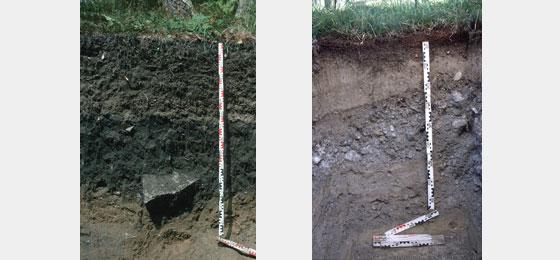"Forest soils" project completed

Swiss forest soils store on average 143 tonnes of carbon per hectare, approximately 20 percent more than contained in the living biomass. Carbon stocks are highest in soils on the south side of the Alps.
Carbon stocks in Swiss forest soils are slightly higher than in neighbouring Central European countries. Coniferous forests store considerably more carbon in organic layers than deciduous forests (38.0±2.4 t C/ha versus 10.1±0.7 t C/ha). Carbon stocks in mineral soil are comparable for the two forest types. The biggest carbon stocks are located in the Southern Alps. Switzerland's total soil area contains roughly seven times as much carbon as found in the atmosphere in the form of CO2. The modelling and statistical analysis of 1000 soil profiles show that the main driver of carbon storage is not tree biomass production, but stabilisation by soil minerals (iron oxides) and clay. Moreover, a significant rise in carbon stocks is observed when precipitation is higher. The projected increase in droughts is therefore likely to lead to a loss of soil carbon. By contrast, forest age and hence forest development have only a minor impact on carbon stocks at national and regional level.
These findings assist with efforts to improve Switzerland's greenhouse gas inventory. They can also serve as a base line for carbon stocks in Swiss forest soils. At regional level, the impact of disturbances (construction work, windthrow) can be more accurately assessed with the aid of comparisons.
